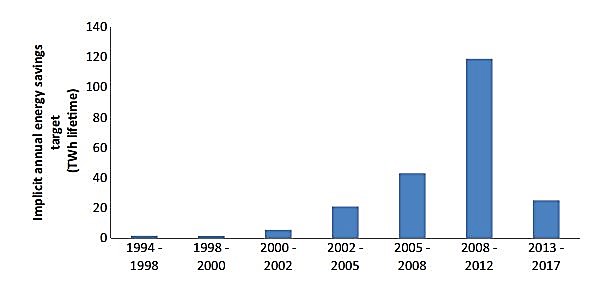
Knowledge Center
We believe that sharing our expertise and collaborations in clean energy policy is how real, effective change happens.
From reports and policy briefs, to webinars and podcasts—RAP advisors have built an extensive collection of resources providing in-depth analysis and practical solutions to today’s energy challenges.
Filter >>
Content Filter:
Widespread outages in Europe are a nightmare for consumers, system operators, and governments. While rare, they can represent a powerful and costly disruption to daily life. In 2006, Europe experienced a widespread blackout that affected more than 15 million people,… View Summary +
In a RAP webinar held on June 19, 2018, David Farnsworth, Jim Lazar, and Jessica Shipley outlined principles regulators can follow to ensure that electrification initiatives benefit customers, grid management, and the environment. View Summary +
For electrification to be considered beneficial, it must meet one or more of the following conditions without adversely affecting the other two: Saves consumers money over the long run; Enables better grid management; and Reduces negative environmental impacts. Beneficial… View Summary +
This report, the first of three volumes of Next-Generation Performance-Based Regulation: Emphasizing Utility Performance to Unleash Power Sector Innovation, examines the concept of performance-based regulation (PBR) and how it can provide a framework to connect goals, targets, and measures to… View Summary +

This report, the second of three volumes of Next-Generation Performance-Based Regulation: Emphasizing Utility Performance to Unleash Power Sector Innovation, focuses on best practices for design, development, and implementation of performance-based regulation mechanisms. It begins by laying the groundwork for understanding… View Summary +
This report, the final of three volumes of Next-Generation Performance-Based Regulation: Emphasizing Utility Performance to Unleash Power Sector Innovation, focuses on how performance-based regulation (PBR) can be used to navigate an era of rapid technological change in the power sector. View Summary +
Greater integration of wholesale energy markets in Europe holds enormous potential to benefit consumers in the region. The European Commission and others estimate that the increase in social welfare of fully integrating Europe’s electricity markets could exceed €40 billion annually… View Summary +

The International Energy Agency reported in 2016 that energy efficiency is increasingly understood as a key component of low-carbon energy policy. The European Union encourages Member States to introduce energy efficiency obligation schemes (EEOS) to help meet energy savings objectives. View Summary +

Der US-Bundesstaat Texas ist mit rund 28 Millionen Einwohnern und doppelter Fläche wie Deutschland, der führende Stromproduzent und auch größte Stromkonsument in der USA. Mélanie Persem, Maren Schöttler und Andreas Jahn bieten Einsicht in den heutigen Stand der komplexen Energiepolitik… View Summary +

The Governance Regulation aims to streamline and align planning and reporting across the five dimensions of the Energy Union. The introduction of “Energy Efficiency First” into this framework is a necessary organising principle to deliver on the goals of the… View Summary +
Across many developing countries, the power sector persistently underperforms despite years of market reform efforts. India, where de facto responsibility for the power sector rests with subnational (state) governments, provides a useful laboratory to examine why. The state of West… View Summary +
Without bold energy efficiency policies, it will be impossible to reach the goals articulated in the Paris Agreement. This is the main finding of authors from the Regulatory Assistance Project, Öko-Institut, and Stefan Scheuer Consulting, who identified the impact of… View Summary +
In a RAP webinar held on April 11, 2018, Dr. Carl Linvill and Jim Lazar unpack smart non-residential rate design and explain how it can produce benefits for customers in your state. Regulators can create price signals for utilities that reduce… View Summary +
The growth and development of solar energy, which is so important in the current global context, is determined by political economic factors, and in turn, has varied implications for energy justice. India’s western region presents a complex context within which… View Summary +
Małe systemy ciepłownicze stoją przed wieloma wyzwaniami. Po pierwsze, najczęściej wymagają modernizacji zarówno w obszarze wytwarzania, jak i dystrybucji. Po drugie, regulacje wspierają rozwój niskoemisyjnych i efektywnych technologii, wykorzystujących OZE i kogenerację. Duże znaczenie w tym zakresie ma europejska dyrektywa… View Summary +

